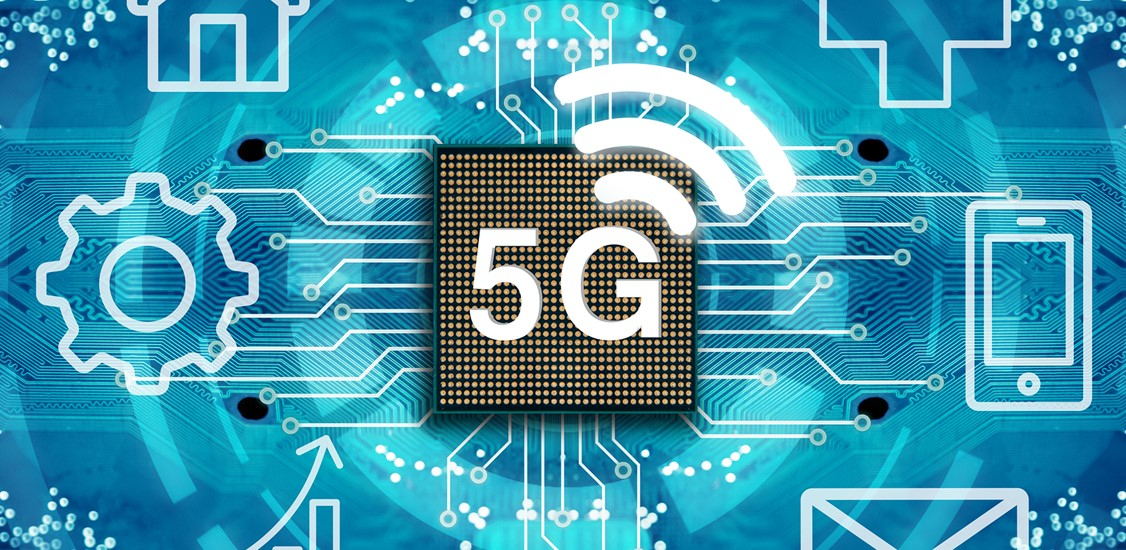If 2020 taught us anything, it is to expect the unexpected. Yet despite the impact of an unforeseen pandemic, we saw great progress in the telecom industry, especially as operators all over the world began to rollout 5G. The lockdowns associated with COVID-19 also ushered in new trends in connectivity, as we moved into distributed networks at home and moved away from offices, schools and other group gathering places.
We expect to see many of these changes continue into 2021, as well as exciting progress toward 5G connectivity and how it will impact everything from the device market to IoT to a greater proliferation of 5G networks. Below are seven predictions for what lies ahead.
#1: COVID-19 will accelerate 5G Standalone rollouts
The 2020 pandemic has changed the way the world operates, with many industries forced to change their business models in order to survive. One such example are event-based industries that relied on large venues to draw crowds - concerts, sporting events, conferences, etc. These enterprises that are looking for greater opportunity and flexibility in connecting individuals together are driving telecom operators to roll out 5G SA as it provides the slicing and other core network functions that are required to support such services. In addition, consumer devices such as wearables that offer virtual, augmented and mixed reality experiences – will start popping up consistently in regions that are leading 5G deployments such as the U.S and parts of Asia.
#2: Connectivity will continue to move beyond fiber and towers

Marc Price,
CTO,
MATRIXX
2020 was abuzz with the launch of low earth orbit satellites. Hardly new, LEO satellites were made prominent by Elon Musk’s Starlink and others, and have become a popular option for network connectivity, particularly in places where it was too challenging or cost-consuming to lay fiber. Satellite technology has exploded, such that experts calculate we’ll have 50,000 active satellites orbiting overhead by 2030. This could prove highly effective and disruptive if these satellites can demonstrate their capabilities at scale. Another out-of-the-box option is undersea cable, used heavily by companies like Facebook and Google, the former of which is using it to increase connectivity across the African continent. While 5G networks get their fair share of attention in 2021, we’ll also see creative options for connectivity flourish by market players outside of telecom.
#3: Apple will spearhead the transition away from smartphones
There is broad speculation that Apple will announce its own AR glasses in 2021, possibly to be available in 2022. If expectations for the technology align, Apple glasses could be the catalyst for redefining wearable computing and serving as the beginning of the end for our dependency on smartphones. It’s hard for people to visualize what could be the ‘next big thing’ in terms of keeping us connected, or imagine a world without being tied to the device in our hand. Apple’s mixed reality glasses will prove to be a major leap forward in how people and computers interact, and will forever change the need for smartphones.
#4: Automation and Edge Computing will drive the shift to private networks
For many industries, further automation of production and operations is starting to benefit from the proliferation of edge computing. Edge computing is making it easier for companies to use robotics and automated devices in factories, mining facilities and other industries. This massive dynamic shift received additional tail winds in 2020 with COVID-19 making it more difficult to have large groups of humans working in close proximity. Having taken root over the past 2 years, 2021 will see a significant uptick via the proliferation of private networks. The move toward private networks was already in place pre-pandemic, and has proved well supported on the regulatory side – with many governments allocating and auction spectrum for private use. And many operators now getting into the game as well.
#5: The Internet of Things (IoT) will tip the scales for connected devices
The number of IoT devices connected via any network technology will surpass the number of human connected handsets in 2021. In fact in the US and China, cellular connected IoT devices will surpass devices used by people next year. Nearly 12 billion IoT devices are currently connected worldwide, with more than 2 billion cellular IoT connections. As these numbers grow, machines will exceed the number of humans attaching to and connecting via mobile networks. IoT device additions are expected to continue to grow much faster than non-IoT devices, with a forecast of 31 billion connected IoT devices by 2025. 5G will play an increasingly important role in the rollout of both wearables and some high-bandwidth and low-latency IoT devices including autonomous cars, drones, security cameras, and industrial robots.
#6: The definition of ‘telco’ is going to change
Private networks, new spectrum options including unlicensed, openRAN, and openCore are changing the economics of delivering telecom services, and we will see a multi-party ecosystem emerge as a result. Traditional operator networks are at risk for the first time, not from OTT players but from cloud, social media, ecommerce players and emerging service providers that can provide connectivity in new ways. While the network has been commoditized over the past decade, it is still a differentiated core asset for telco operators. Now, with networks becoming less capital intensive, this opens the opportunity for other players to get in the game and create an ecosystem of options for enterprises so that they can start embedding connectivity in their solutions versus being reliant on existing operator networks. Operators can compete by bringing to bear similar options with network slicing, and lower cost, on-demand network resources should encourage a number of new business opportunities that can take advantage.
#7: Increased attention on rural markets
The great migration of 2020 was, perhaps unexpectedly, a move away from urban centers. The role of the pandemic and subsequent lockdown had individuals and families rethinking priorities and, with it, locales. This drive toward more rural communities, along with the forced redistribution of network capacity brought on by the pandemic, will bring about changes in consumption and infrastructure requirements. The work environment may never fully go back to the brick-and-mortar experience of pre-pandemic days, though increasingly individuals will expect office-grade technology available in their homes. This will continue to drive the push toward rural access and increase broadband connectivity to regions that had previously been overlooked or deemed ‘too expensive’ by network providers.


















